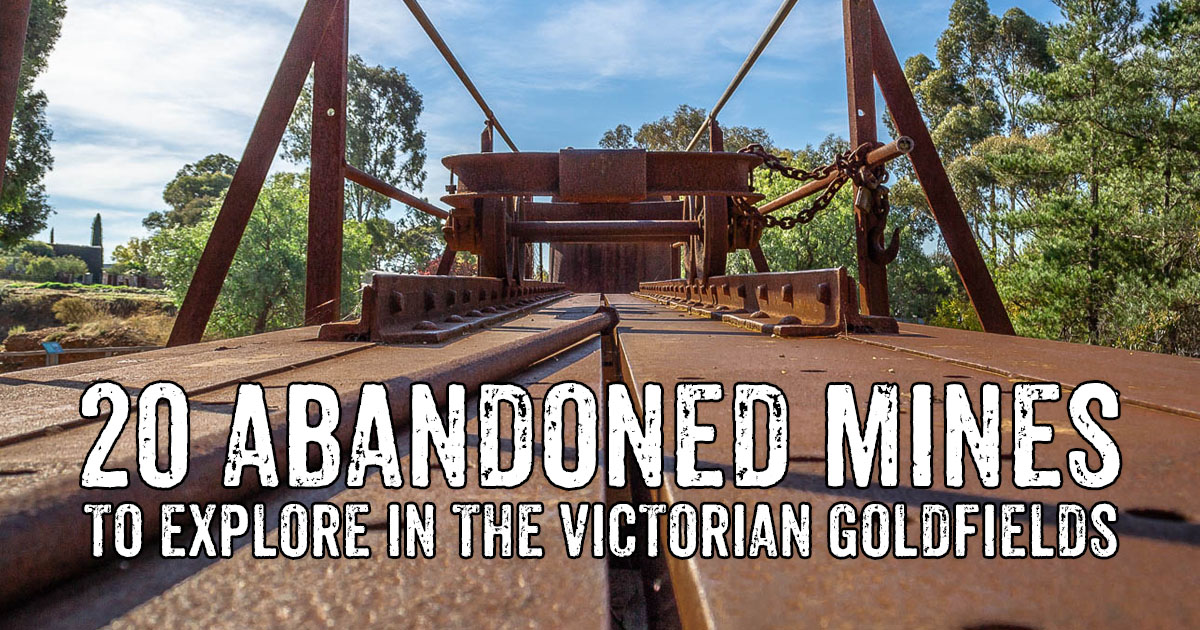In the early years of operation at the Port Phillip mine, ore was roasted in huge stone kilns before crushing, and we can still see remnants of them at the site today.
Any ore which was not naturally oxidised by weathering, or which was too large to be put through the stamp battery, was first sent to the kilns to be roasted, quenched with water, then smashed up by hammers.
In gold bearing ore, there is often a presence of sulphide minerals.
These, among others, can include Iron pyrite, a combination of iron and sulphur, and arsenical pyrite, a combination of iron, arsenic and sulphur. Gold can be trapped within pyrites in varying amounts.
There were two problems faced when treating pyrite through crushing and amalgamation - the first was that the way gold was enclosed within the pyrites meant that ordinary crushing would not properly release it, and the other was that the sulphides would sicken the mercury, interfering with the process of gold recovery.
Roasting was beneficial for highly mineralised ore as it oxidised the pyrites, releasing the gold and driving away the sulphur and arsenic in the fumes.
Here at this mine in Clunes, most of the gold was free milling, hosted in simple quartz, but some was locked within pyrites that made up a small percentage of the ore.
Now, in the early stages of mining here, the ore being extracted was close to the surface and any sulphides present had already been undergoing oxidisation through weathering, making it fairly simple to process for gold.
The Port Phillip Company had always maintained the practice, uncommon at the time, of assaying the tailings from the stamp battery to determine how much gold was being lost.
Once the mine approached the water table around 1859, the sulphide minerals weren't being naturally oxidised. and the amount of gold being lost in the tailings with the pyrite was now found to be quite substantial.
Something had to be done. They began to experiment.
The Port Phillip and Colonial Gold Mining Company pioneered some of the earliest attempts in Australia to treat pyrites for gold, right here at Clunes.
And this is where things got very interesting.
The roasting of large pieces of ore in kilns before crushing had proved to be fairly ineffective. Not all the pyrite was able to be oxidised using this method, and the remaining minerals interfered with amalgamation when put through the battery.
They found it was much better to separate the pyrite after crushing, and to roast the concentrate before further treatment.
Buddles were used to separate pyrites out of the battery sands, and an improved reverberatory furnace was designed and patented to oxidise the pyrite concentrate.
Once roasted, grinding the damp concentrates in a Chilean mill with mercury was found to be the most effective method of recovery.
After much experimentation, by 1864 the Port Phillip Company had established a complete process and plant to recover gold from pyrite. They were considered world leaders in the field of metallurgical research.
Today, we can still see the scar left on the hillside by their brilliant early method of treating pyrites. A long depression marks the site of their reverberatory furnace's hillside flue, which ran up to a chimney at the top.
Further innovative experimentation and advances by many industrious inventors throughout the rest of the 19th century saw the introduction of the chlorination and eventually the cyanide methods, to more effectively recover gold from pyrite.
But it all began with the primitive method of roasting quartz.



